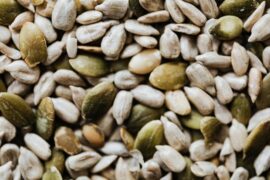We are constantly bombarded with ever changing information about what we should and shouldn’t be eating and you only have to blink and there’s some new diet plan hitting the headlines. Nearly one in four British adults are classified as obese and with worrying figures estimated at almost half of men and 43% of women expected to be obese by 2030 it’s no wonder that the diet, health and fitness industry continues to thrive.
Diet trends in 2015 have seen us eating like cavemen on the Paleo diet, only dieting for some of the week on the 5:2 diet and believing that sugar is the source of all evil. So what can we expect to happen to our diets in the future? We take a look at how our meal plans could look in 2016:
Insect Diet
Insect eating, or entomophagy to give it its proper name, is considered entirely normal in some areas of the world, but the British palate is somewhat more squeamish about it. It is estimated that around two billion people worldwide eat insects, ranging from weaver ants in Thailand, termites in the African nations and yellow wasp larvae in Japan. Jam-packed full of protein and micronutrients, such as iron and zinc, insects also have the added benefit of needing much less space than livestock, are drought resistant and have a high yield rate. In fact, insects have just as much, if not more, nutritional value as the meat we are used to eating. The list of edible insects is a staggering 1,900 and growing, which means there is also a lot of choice. The ‘Insect Deliciousness’ project run by the Nordic Food Lab, a non-profit culinary research institute, explores the possibilities of insects becoming a major food source. Could we really be serving up creepy crawlies at mealtimes in Britain in the future? With population figures estimated to rise to as high as nine billion by the year 2050, something has to be done to take the strain away from our current meat and protein production and if that means eating bugs then so be it.
Low FODMAP Diet
Approximately 70% of the human immune system is controlled by gut activity and researchers in Australia are investigating a revolutionary new way of eating that is scientifically proven to improve the health of the gut and control bad digestive symptoms. FODMAP stands for:
- Fermentable – food rapidly broken down by the gut.
- Oligosaccharides – foods including fructans and galachtans, such as wheat and some vegetables and legumes.
- Disaccharides – foods including milk and sugar lactose.
- Monosaccharides – foods including fructose.
- Polyols – artificial sweeteners.
All of these foods are hard to digest and leads to a disruptive balance of the healthy microbiota that is stored in the gut. Professor Peter Whorwell, who is Professor of Medicine and Gastroenterology at Manchester University Medical School explains, “changes in gut microbiota have been linked to joint problems, inflammation and to depression and anxiety”. Research done on low FODMAP diets saw symptoms improve in 74% of cases.
Bad foods include:
- Some fruits such as, apples, pears, cherries, figs, watermelon, apricots, nectarines, peaches and avocados.
- Honey.
- Milk and milk products, like yogurt, ice cream and soft cheeses.
- Wheat and rye bread.
- Pasta.
- Some vegetable such as, garlic, onions, sweetcorn, beetroot and cauliflower.
- Legumes.
Good foods include:
- Sourdough and spelt bread.
- Rice noodles.
- All types of rice.
- Polenta.
- Porridge oats.
- Some cheeses such as, mozzarella, cheddar, feta, Camembert and cottage cheese.
- Some nuts such as, pecans, macademia, pinenuts, walnuts and peanuts.
- Seeds.
- Tofu.
- Quorn.
- Some vegetables such as, aubergine, kale, green beans, peppers, carrots, lettuce, tomatoes, the green parts of leeks and spring onions, chilli, ginger and chives.
- Some fruits such as, bananas, oranges, blueberries, pineapple, and strawberries.
- Dark chocolate.
A diet high in these foods is also thought to affect the way the body stores fat, hunger levels, and blood glucose levels as well as causing problems such as IBS, bloating, cramps and mood levels. Put simply, eat a diet low in FODMAP’s and you will not only improve your health, but you could also lose weight.
Seaweed Diet
Seaweed is already a staple food in much of Asia and although it is found at the very bottom of the food chain, it could hold the solution for worlds current food shortages. There are 10,000 types of seaweed in the world, 630 of which are found in the UK. At the moment only 145 species of red, brown and green seaweed have been used for food, but research is continuous. Executive director, Dr Craig Rose, of the Seaweed Health Foundation promotes the benefits of seaweed further by explaining, “The great thing about seaweed is it grows at a phenomenal rate, it’s the fastest growing plant on earth. Its use in the UK is going to rise dramatically”. The taste of seaweed varies between species, but it generally and unsurprisingly has a salty taste, which can be used in granular form to replace the salt in bread and processed food. It is well known that diets high in salt can lead to high blood pressure, strokes and early death so by including seaweed or using products that have seaweed as an alternative to salt is hugely beneficial.
Junk Food Diet
No really, you did read that correctly. Concerns over the rise in our consumption of convenient, yet hugely calorific fast food has resulted in companies having to rethink their future plans. Pepsi Co has hired senior figures from the World Health Organisation to look at how they can make changes to their products that will help their nutritional value, without altering the taste. One of the companies most successful brand, Walkers, has recently seen its salt levels reduced by between 25-55% and its saturated fats by 70-80%. Future plans also include a brand new salt, which is said to dramatically reduce sodium levels, yet retain the levels of taste. Other companies, such as McVities, Nestlé and Kraft Foods have also reformulated their products to suit the more health conscious consumer. Fast food chain, McDonald’s, which has come underfire in the past for it’s ‘supersize’ policy, now includes the calorie contents of all of the products on its menu, reduced the saturated fat and calories in its burgers, cooks chips in healthier canola blend oil and runs promotions such as ‘free fruit Friday’, which gives children a free fruit bag in their Happy Meals on Fridays. The good news? Well, lower calories and saturated fats in junk food, means we can carry on eating our favourite, tasty treats with less guilt about what it is doing to our health and our waistlines.
Nutricosmetics
Imagine healthy, tasty foods with powerful ingredients that can also nourish the skin and fight against the aging process. Step up the new beautiful diet trend of nutricosmetics. In America, Nestlé have produced Glowelle Beauty Drinks, which contain phytonutrients, antioxidants and botanical fruit extracts to fight wrinkle-producing, skin-damaging free radicals caused by the sun and pollution. Always the first country to experiment with new ideas, Japan has; moisture boosting soft chews, which contain hyaluronic acid and collagen; collagen infused fruit flavoured marshmallows and chicken or bean soup infused with collagen to help improve the structure of your skin. Confectionery company, Mars, have been testing the benefits of nutricosmetics since as far back as 2008, when they added flavenols and minerals to chocolate in conjunction with Dove Beautiful and Dove Vitalize, but they have yet to release these products to the market. Although some of these products are currently available throughout much of Europe and Asia, we predict 2016 will see a boom in the nutricosmetics industry.
Lab Food Diet
With advancements in science and technology being what they are, we predict a surge in food products which have been genetically modified to be lower in calories and of increased nutritional value. Scientists in Japan are already testing weight loss technology that fools our eyes into thinking we are eating more than we actually are, which would consequently trick our brains into believing we are full.
And earlier this year, Dutch scientists successfully produced in-vitro meat, also known as cultured meat, in a lab rather than from an actual animal. Strips of muscle tissue were grown from stem cells taken from cows and are said to look very much like calamari. The objective is to create the world’s first “test-tube burger” by the end of this year, meaning a trip to a fast food outlet in 2016 could be a very different experience. In a recent study carried out by Oxford University, scientists established that using ‘lab meat’, rather than relying on slaughtering animals, would result in lower emissions of greenhouse gases and a reduction in energy and water usage. From a diet point of view, ‘lab meat’ and in fact any other food products built in a lab, could be modified to reduce the fat content and to contain more nutrients.
The future of our meal plans is to some extent uncertain, but what we do know is that something needs to be done about the obesity crisis that is currently affecting the First World. Who knows, maybe in 2016 we’ll all be eating collagen infused grasshopper burgers with a side of seaweed fries!

































